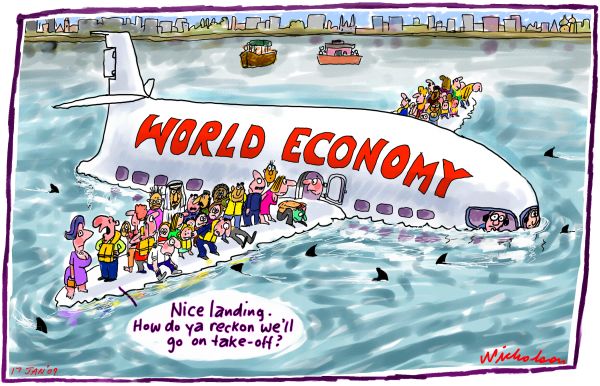Learning From The Financial Crisis In 2013
The Great Depression of the year 1929 was when US economy was totally at its lowest point. The banks were shut down. People lost their lifelong investments. Businesses suffered due to the stock market crash. Instability and financial conditions became bad to worse. The majority of the population lost their jobs due to bankruptcy, and there were lots of chaos and confusion among financial institutions. Then, after a decade of resurrection, US economy stood up on its feet, and when the entire world economy went downhill in World War II, United States earned great dividends through the Second World War.
Then there have been months, years and decades of highs and lows in the US economy. As the world’s financial system is fairly dependent on the American economic conditions, it becomes extremely crucial for US to rightly assess the market scenarios and provide the right solutions.

Five years ago in 2008, we had a stock market crash that took many jobs away in the ‘recession’ period. Now let us go back to the times of stock crash of October 1929, when we were not even born. But we have to look how the US economy rebuilt itself after its worst low-point in its economic history. Seven years after that Great Depression, John Maynard Keynes published the most influential work to come out in those times of trouble. ’The General Theory of Employment, Interest and Money’ book was published, but the worth of that book was not clear at that time. The World War II started, and there was a race for arms and ammunition across the warring nations. United States provided all the equipments to its allies and built its crashed economy on the back of global war. The demand for arms, ammunition, technology and manpower was quite high during the war, and America supplied the requirements at ‘some’ rate.
There has been only five years to the 2008 recession and economists are trying to predict the intellectual consequences. It is too early as of now to say anything about the highly volatile world economy. It can go in any direction from here on. West (United States majorly and some European nations) had been the focal point of world business, but coming to the decade, the point is slowly shifting towards the East. The Asian economies are on global spree, and the likes of China and India can dominate the global markets in years to come. Chinese have already started flexing its economic muscle. It is waiting for some other international war of axis and allies to replicate what the United States had done in the Second World War. Anyways, that should never happen.
Justin Fox, author at Harvard Business Review, says to him three shifts stand out.
(1) Macroeconomists are realizing that it was an oversight error to pay so minute attention to economics.
(2) Financial economists are beginning to tussle with some of the broader results of what they’ve learned over the years about market misconduct.
(3) Economists’ extremely influential grip on a key component of the economic world—the corporation—may be loosening.
The American economist Irving Fisher argued that price instability (inflation and deflation) was the cause of most of the economic turbulence and could be averted by astute central bankers. Also, the government monetary policies should have been better. Well, 2013 is over, and we all can hope that 2014 provides a good year in terms of fiscal economics.
What do you say? Keep visiting us for more updates.
By G+ Author: Elizabeth Steinfeldt.
Elizabeth Steinfeldt
Latest posts by Elizabeth Steinfeldt (see all)
- Silver- the app that compares hundreds of credit cards at once - December 3, 2014
- San Francisco Second US city to raise minimum wage to $15 - November 5, 2014
- FinancialAdvisorsToday.us - A Leading Financial Staffing Firm - November 5, 2014
